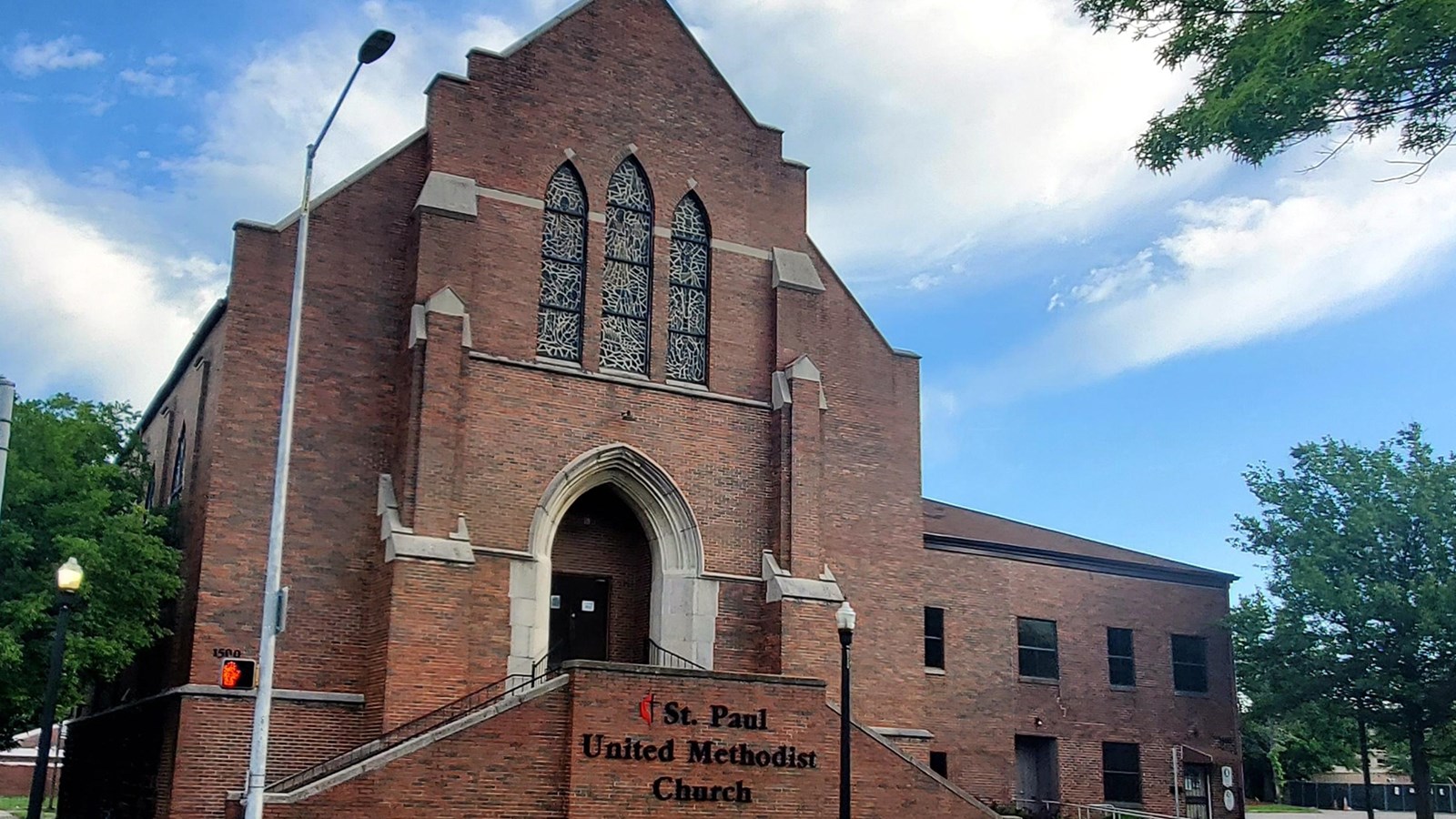Last updated: June 24, 2021
Place
St. Paul United Methodist Church

Accessible Sites, Cellular Signal, Information, Parking - Auto
Founded in 1869, St. Paul United Methodist Church (UMC) is one of the oldest African American churches in Birmingham. Its current building was erected in 1904. Beyond serving as a space for community and worship, St. Paul UMC has also played a critical role in the pursuit of civil rights.
In 1956, just after the current church building was erected, St. Paul served as the site of meetings to integrate Birmingham buses. During Project "C" (for "conflict") in the spring of 1963, St. Paul UMC hosted meetings and training sessions in nonviolent civil disobedience for demonstration participants. Great personal restraint was needed to face violence with peaceful protest. These trainings were instrumental to achieving the goals of Project C, also known as the Birmingham Campaign. Also during Project C, St. Paul UMC served as the mustering point for the Palm Sunday Children’s March in 1963, which ended with police, dogs, and fire hoses aggressively dispersing the nonviolent marchers under the eye of national media. Images of snarling dogs attacking children participants, some as young as 6, served as an inflection point for a nation grappling with racism's legacy. Notoriously callous Eugene “Bull” Connor, the Commissioner for Public Safety, led the police forces that day. Laveeda M. Battle, parishioner at St. Paul UMC, points out the juxtaposition between Connor’s faith and actions:
Here we had children marching from a Methodist church for equality and we had a United Methodist as the Commissioner over public safety, siccing dogs and having fire hoses turned on children.
- Laveeda M. Battle
Eventually, the church-led efforts to desegregate Birmingham rippled across the nation. The Civil Rights Act of 1964 passed in large part due to Project C and the faith-driven individuals and institutions, banded together in the belief that a better society could be built.
Today, St. Paul UMC still serves as a place of worship and continues to host events promoting civil rights. Visitors can sit in the pews and marvel at the stained glass windows. Of particular interest is the design in the far left corner, dreamed up by a middle-school student to represent the story of the Civil Rights Movement and the faith that guided it. Descend into the basement where Movement participants met to strategize desegregation efforts, and where civil rights leaders such as Dr. King encouraged action. Ask the parishioners about their experiences during the movement - many will tell you riveting accounts of what they lived and breathed through during this historic pursuit of civil rights in the Deep South.
